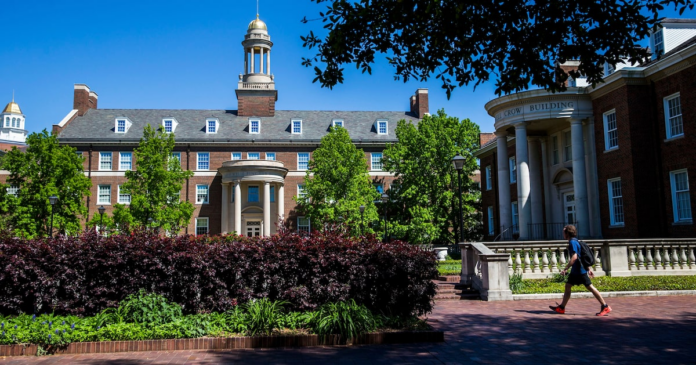North Texas students and families will soon see changes to how they pay for higher education.
President Donald Trump’s “Big Beautiful Bill,” which he signed in July, limits how much students and parents can borrow in federal loans, reduces the number of repayment options and introduces changes to the Pell Grant, the most common form of federal aid.
Related
Republican leaders say the legislation is intended to increase the accountability of colleges, rein in student debt and drive down the climbing costs of higher education.
Education advocates worry the loan limits will make college less affordable and put graduate school out of reach for low-income students.
Related
The changes go into effect July 1, 2026.
Here’s a look at what’s in the legislation.
Student loan restrictions
Families will face an overhauled federal loan system.
Parents used to be able to borrow the total cost of an undergraduate education through the federal Parent PLUS loan. Soon, they will be able to take out only $65,000 per student.
Typically, students are able to borrow the total cost of graduate school through the federal Grad PLUS loan. The legislation eliminates that program and institutes new loan limits.
Graduate students will not be allowed to take out more than $100,000 in direct unsubsidized loans, with a cap of $20,500 per academic year. Those pursuing a professional degree, such as in medicine or law, will be limited to $200,000, with a cap of $50,000 per academic year.
Loans based on alumni outcomes
The law ties federal loan eligibility for degree programs to students’ earnings outcomes.
Undergraduate programs where alumni don’t earn as much as those with a high school diploma will be ineligible to access federal student loans. Graduate programs must meet the income threshold of a working adult with a bachelor’s degree.
Related
Associate degree programs in social work or education, which are valuable but often not well-paid, could be impacted, said Roxanne Garza, director of higher education policy at the national nonprofit EdTrust.
Fewer student loan repayment options
New borrowers will have only two repayment plans to choose from.
One plan gives borrowers a repayment window between 10 and 25 years. The length of the term is based on the size of the debt.
Borrowers who owe less than $25,000 must repay it over 10 years. Those who owe between $25,000 and $50,000 must repay over 15 years, between $50,000 and $100,000 over 20 years, and more than $100,000 over 25 years.
The other plan, known as the Repayment Assistance Plan, is income-based. Monthly payments range from 1% to 10% of your monthly adjusted gross income.
Borrowers earning $10,000 or less will pay $10 a month. Those earning between $10,000 and $20,000 will pay 1% of their income, between $20,000 and $30,000 will pay 2%, and so on. The plan is capped at 10% of income for those making more than $100,000.
Interest will be waived if your monthly payment amount doesn’t cover the interest. Your loan’s principal is also guaranteed to fall by $50 a month — if your monthly payment doesn’t achieve that, the federal government will chip in.
Under RAP, any remaining debt will be forgiven after 30 years.
The law sunsets existing repayment plans, including some that allowed low-income borrowers to pay $0 a month. Current borrowers with existing loans will still have access to some of the old plans.
Pell Grant changes
Students will be ineligible for a Pell Grant if the total amount of other grants, including institutional aid, state aid and private grants, is equal to or exceeds the student’s cost of attendance.
The grant will also expand to include students in accredited, short-term workforce training programs. Eligible courses must be between 8 and 15 weeks and aim to prepare students for high-skill, high-wage jobs.
The Pell Grant, which has a maximum amount of $7,395 and does not have to be paid back, will be prorated for students based on the length of their program.
State workforce advocates and community colleges have long pushed for expansion of the federal grant, which they say will help more Texans access jobs in high-demand industry sectors.
The DMN Education Lab deepens the coverage and conversation about urgent education issues critical to the future of North Texas.



